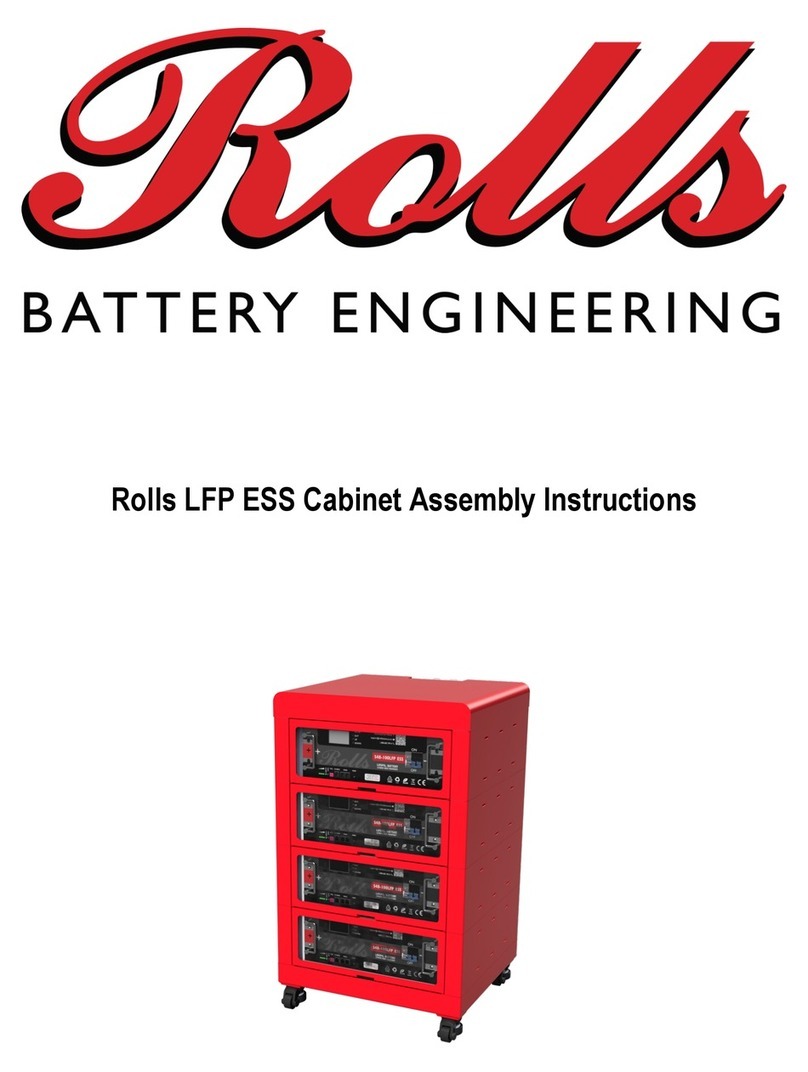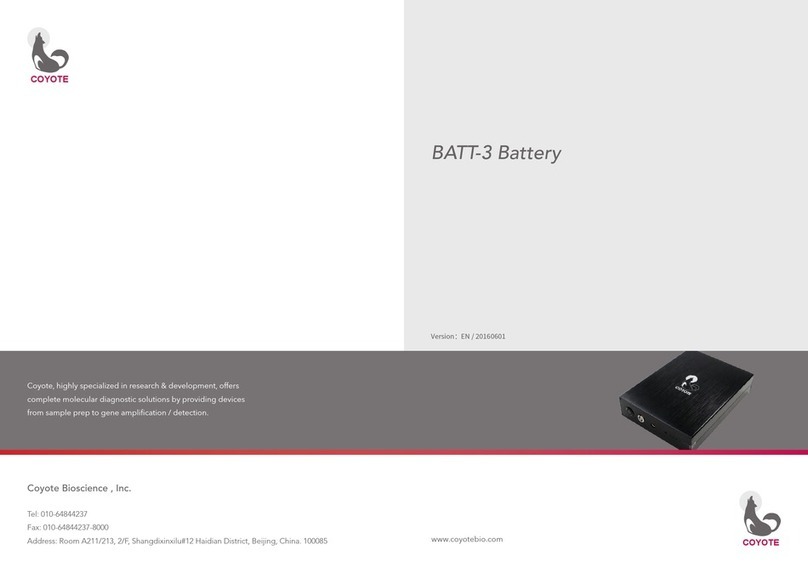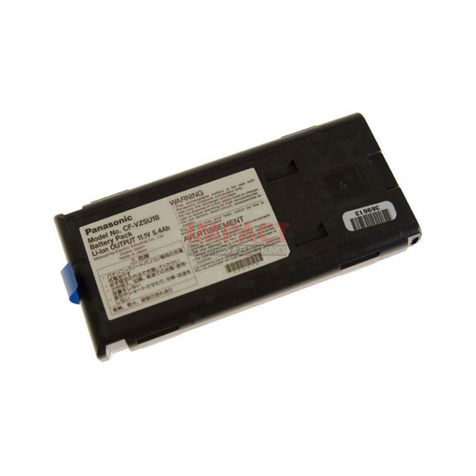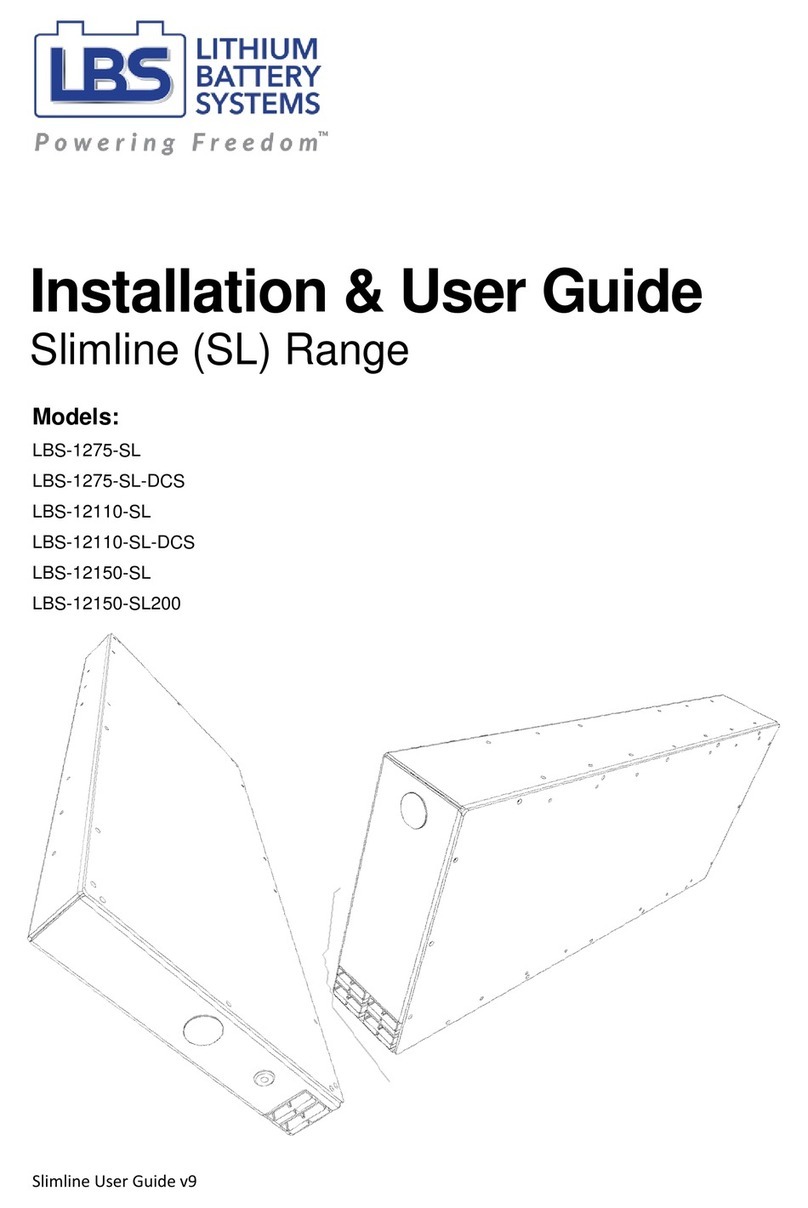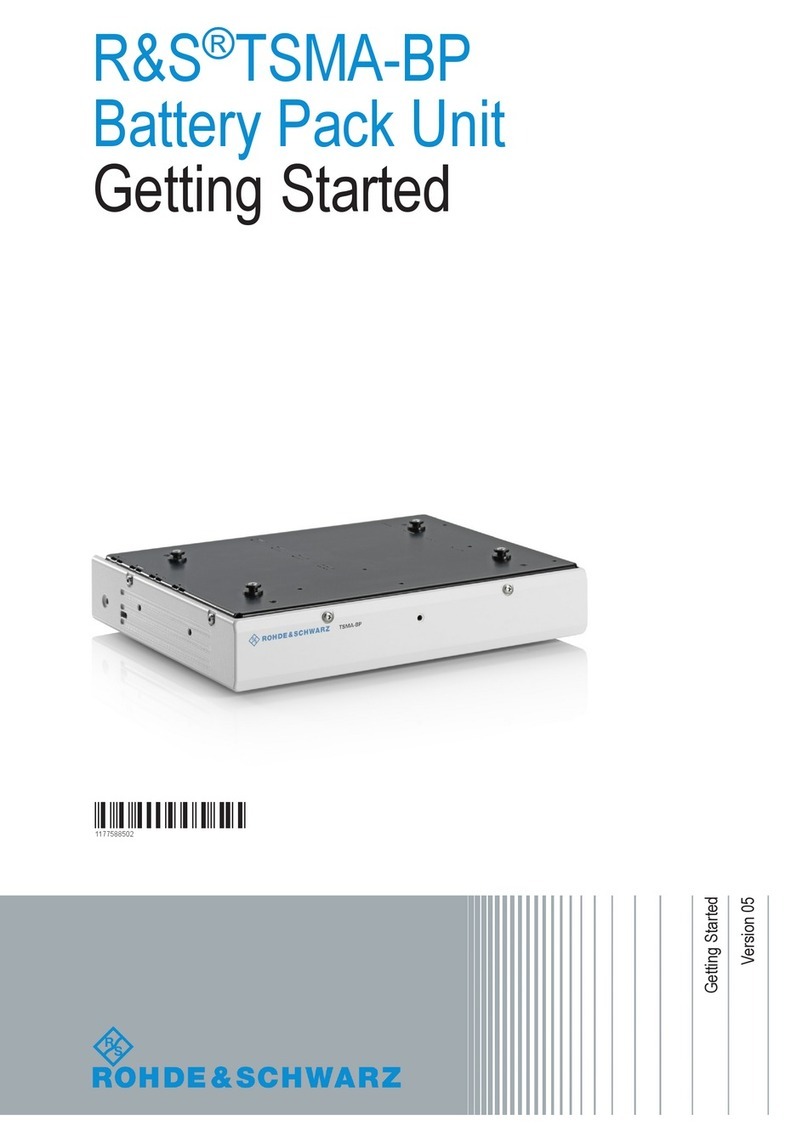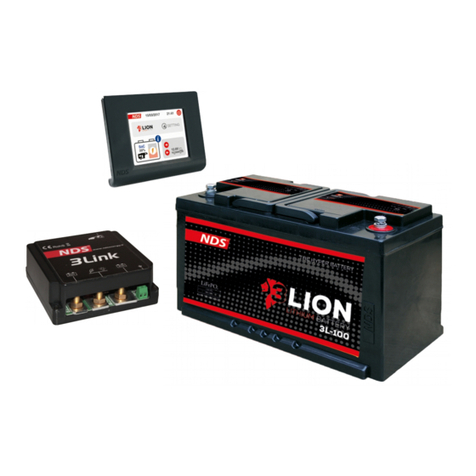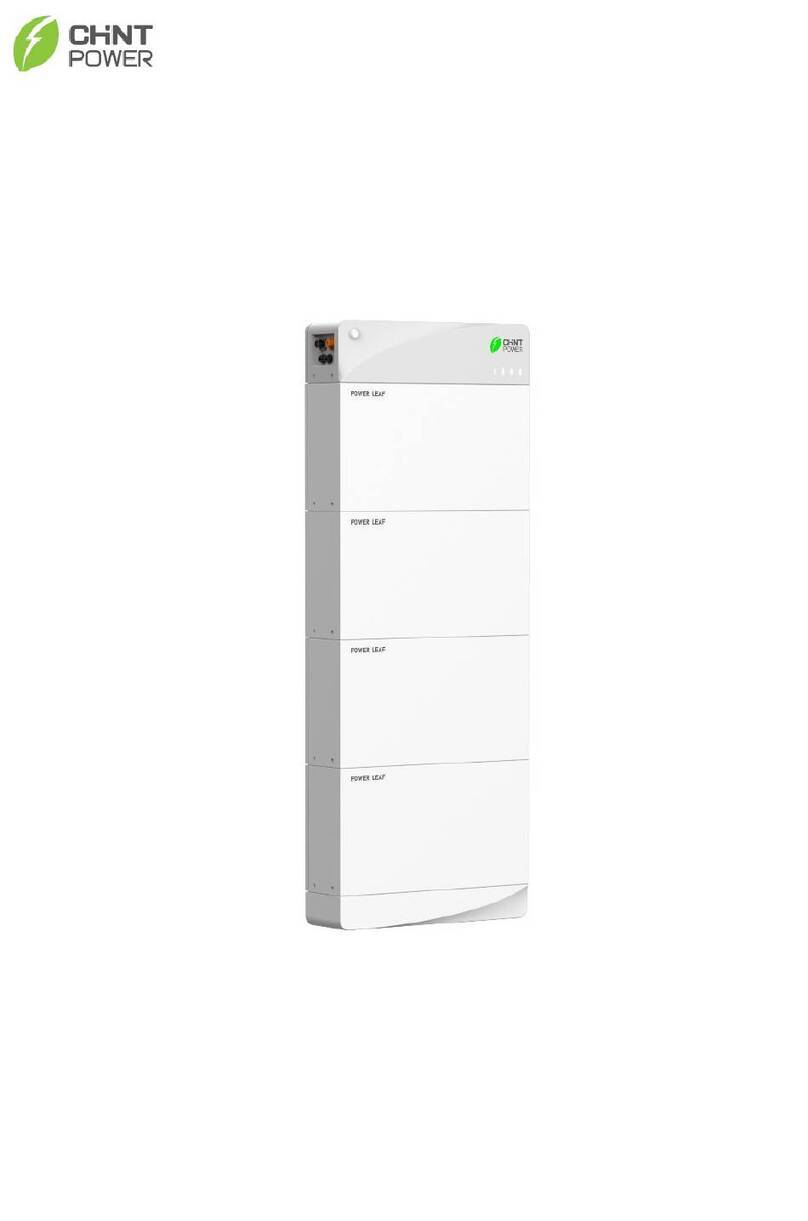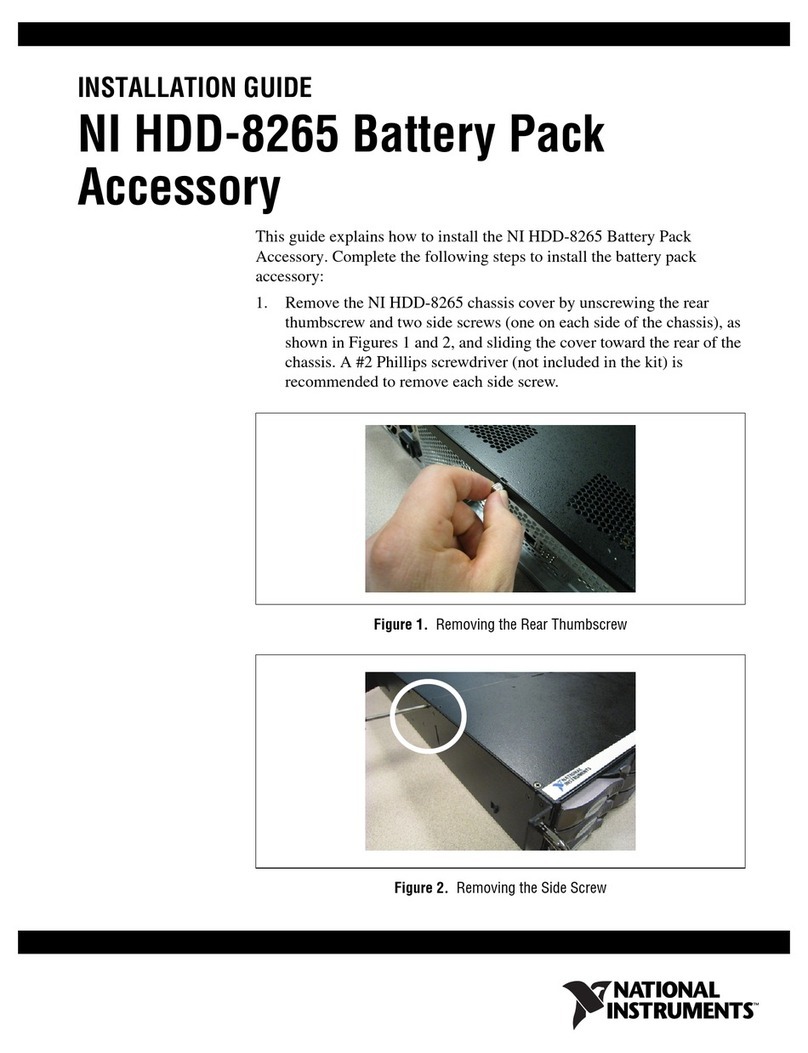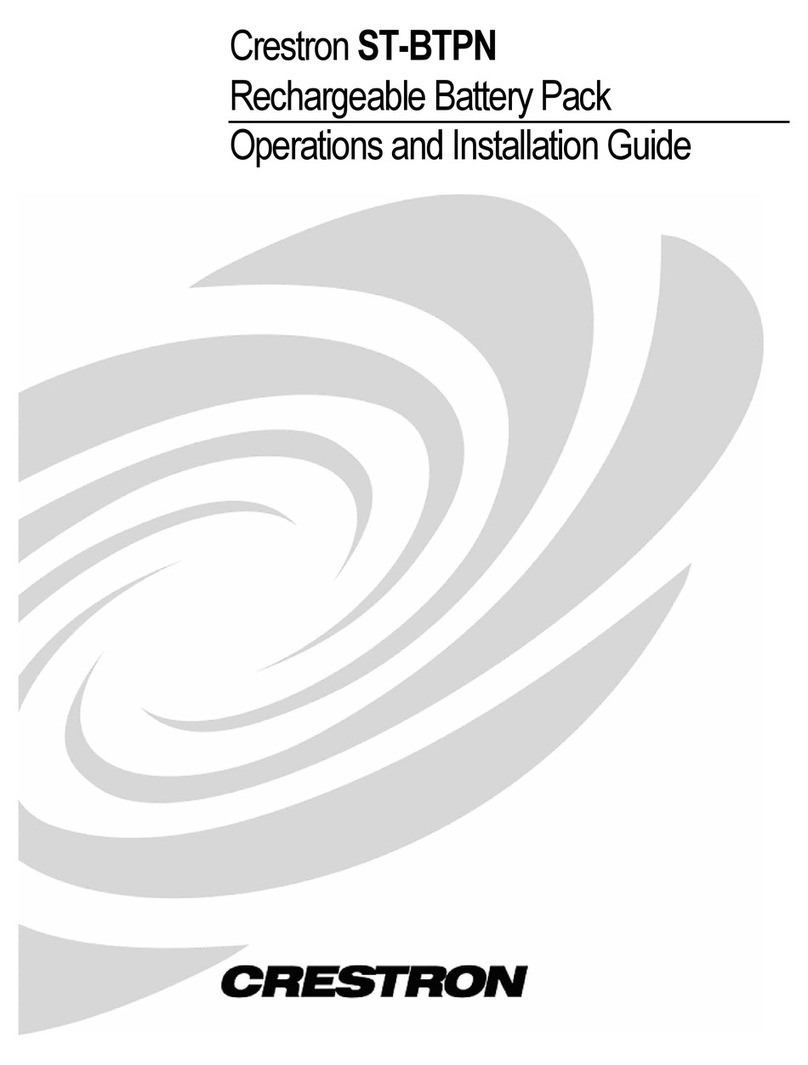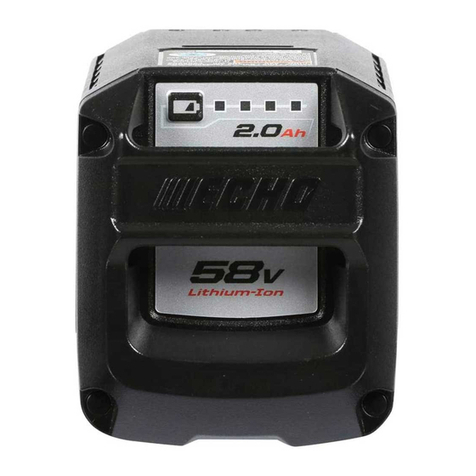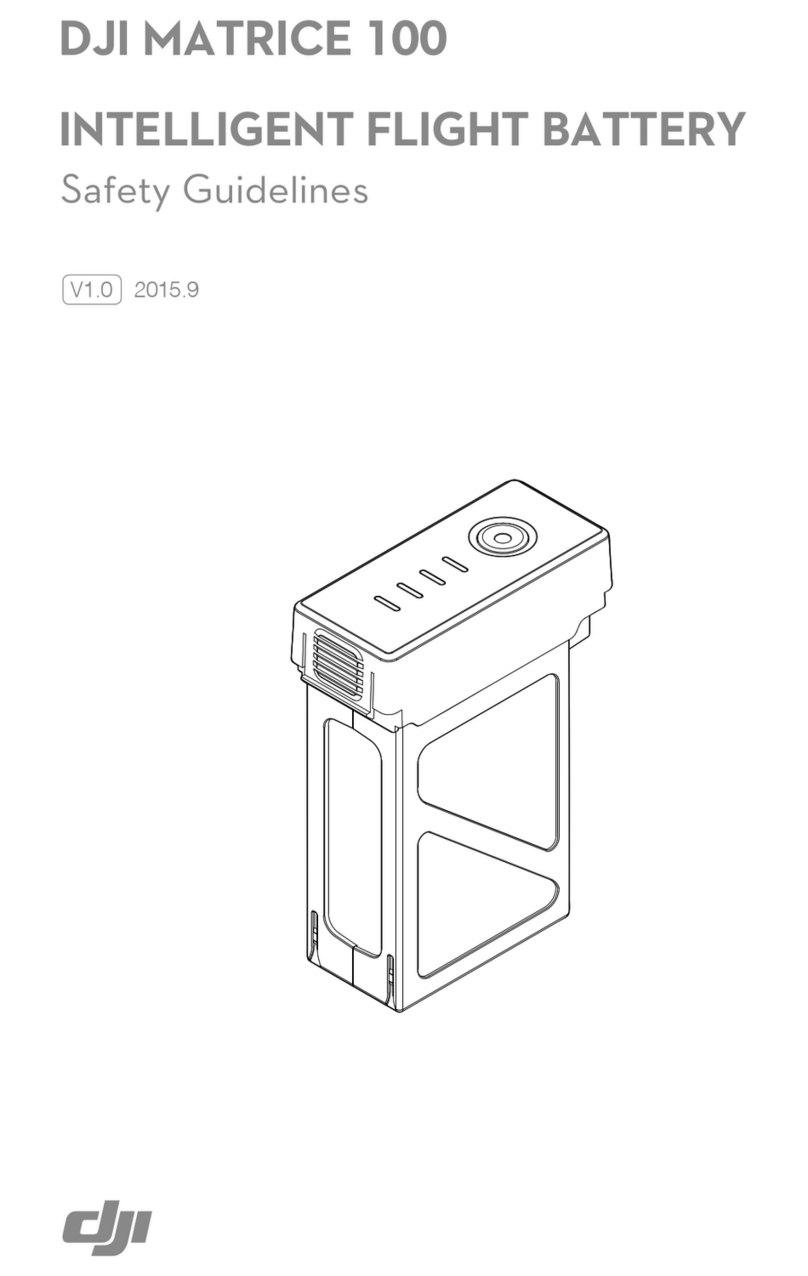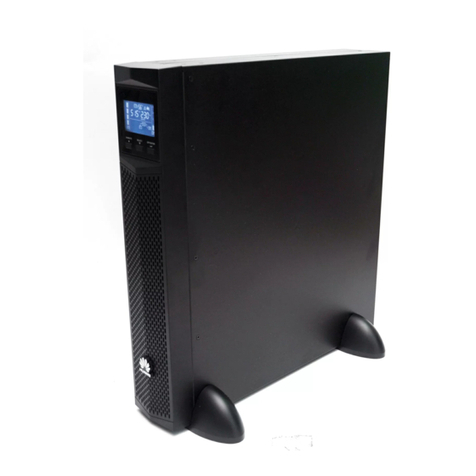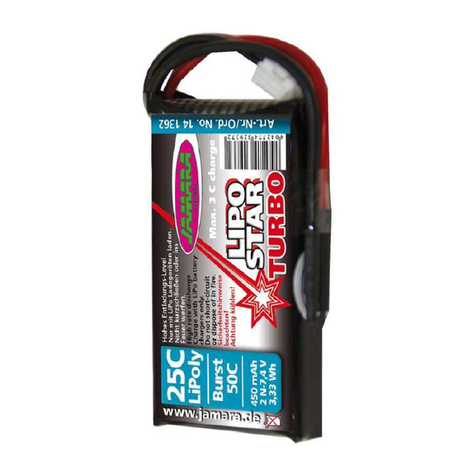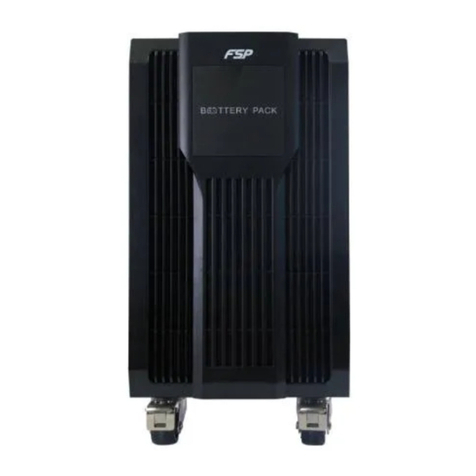Rolls R Series User manual

ROLLS R-SERIES &
S-SERIES DROP-IN LFP
BATTERY OPERATING
MANUAL
Recommended safety, installation, operation
and troubleshooting procedures for Rolls
R-Series and S-Series 12V, 24V, 36V, and
48V LFP (Lithium Iron Phosphate) batteries.

MARINE
MOTIVE
POWER
RENEWABLE
ENERGY

1
TABLE OF CONTENTS
02 Rolls R-Series and S-Series LFP Batteries
05 Storage, Installation, Terminal Torque
06 Cable Connections
07 BMS Protection Summary
08 Connection Limits, Connecting in Series, Example Series Configurations
09 Connecting in Parallel
10 Battery Voltage - Connecting In Series/Parallel
11 Bluetooth/App Connectivity
12 Dashboard & Support Screens, Additional S-Series Features
13 Charging Source: Lead-Acid Battery Charger
13 Status Button, Fuse Access, Fuse Replacement Procedure
14 Upgraded Construction, Case Access, Battery Charging
15 Charging Guidelines
19 Recycling
20 LFP Glossary
22 Appendix
24 Contacts

23
ROLLS R-SERIES AND S-SERIES LFP BATTERIES
Rolls R-Series and S-Series drop-in Lithium Iron Phosphate (LFP/LiFePO4) batteries are an
ideal replacement for traditional lead-acid batteries of equivalent size & capacity and offer
the same quality, reliability and performance found in other Rolls Battery products.
This manual provides detailed instructions for safe and proper installation, operation,
and care of Rolls R-Series and S-Series drop-in LFP battery models. Please read carefully
to clearly understand the operating instructions and any potential safety risks prior to
installation.
Failure to install or use this battery as instructed may result in damage to the product that
may not be covered under the manufacturer warranty. See warranty terms and conditions for
full details.
This manual offers installation, charging, and troubleshooting guidance specific to
Rolls R-Series and S-Series Drop-in LFP lithium batteries.
See Rolls S24-2800LFP & S48-6650LFP ESS Battery Operating Manual for usage instructions
specific to Rolls S24-2800LFP ESS and S48-6650LFP ESS (Energy Storage System) models.
See Rolls 24V & 48V LFP ESS Battery Operating Manual for usage instructions specific to 19”
rack, floor and wall mount ESS models.
Para ver la versión en español, haga clic aquí.
O consulte nuestro sitio web.

23
This document is NOT APPLICABLE to the following models
48V ESS LFP Models
(S48-100LFP ESS)
24V & 48V ESS LFP Models
(S24-2800LFP ESS and S48-6650LFP ESS)
LFP Battery
(Cell Voltage = 3.2V)
Lead-Acid Battery
(Cell Voltage = 2.0V)
Battery Nominal Voltage
12.8V (4 cells)
Battery Nominal Voltage
12.0V (6 cells)
Battery Nominal Voltage
25.6V (8 cells)
Battery Nominal Voltage
24.0V (12 cells)
Battery Nominal Voltage
38.4V (12 cells)
Battery Nominal Voltage
36.0V (18 cells)
Battery Nominal Voltage
51.2V (16 cells)
Battery Nominal Voltage
48.0V (24 cells)
Nominal voltage of an LFP battery differs from equivalent lead-acid batteries.
Rev. Changelog Author/Editor Date
1.0 Release Version - R-Series
Revision Jordan Torrealba 2021/12/14
2.0 Release Version – R-Series
and S-Series Revision Jordan Torrealba 2023/07/25
VERSION HISTORY/CHANGELOG

45
WARNING: Explosion, Electrocution, Or Fire Hazard
• A battery can present a risk of electric shock, burns, fire, or explosion.
• Ensure cables are properly sized for the system current and cable runs are as short as
possible.
• Ensure cables between batteries are of equal length, reducing line inductance and voltage
spikes, which can damage the BMS.
• Ensure adequate airflow around batteries and that they are clear of debris, 2cm/1” spacing
is recommended.
• Never smoke or allow a spark or flame near the batteries.
• Always use insulated tools.
• Avoid dropping tools onto batteries or other exposed electrical parts.
• Prolonged exposure to cold temperatures can cause significant damage to batteries,
proportional to charge and discharge current:
• Never charge an R-Series drop-in LFP battery or bypass the heating controls on
an S-Series drop-in LFP battery below 0°C (32°F).
• Never discharge an R-Series or S-Series drop-in LFP battery below -20°C (-4°F).
• Never charge a battery with a deformed or bulging case.
• Do not expose a Rolls drop-in LFP battery to heat more than 60°C (140°F) during operation,
and do not store for extended periods of time above 45°C (113°F). Do not incinerate or
expose to open flame.
• If a battery must be decommissioned, always remove the grounded terminal from the
battery first. Make sure all connected devices are shut down.
• When installing, leave adequate clearance between batteries 2cm/1” is recommended.
• When replacing batteries, use the same make, model, and quantity of batteries.
• Do not mix old and new batteries, or batteries with different nominal voltages.
• Avoid dropping batteries during the installation process.
• Do not dismantle or remove the battery components.
• Battery maintenance should be carried out by qualified personnel under the guidance of
Rolls Battery.

45
STORAGE
Rolls R-Series & S-Series drop-in LFP batteries should be stored in an environment with
temperatures between -5°C (23°F) and 45°C (113°F). 20°C (68°F) is recommended.
If seasonally stored in a space which will fall below -5°C (23°F), it is recommended to
discharge the battery to between 60-80%, disconnect the battery from any external system
and store the battery in an alternative location above -5°C (23°F).
Rolls drop-in LFP batteries self-discharge and should be charged, at minimum, once per
year, even when in distributor stock or storage. For temperatures above 40°C (104°F) the
battery should be charged every 3 months. Do not store Rolls R-Series & S-Series drop-in LFP
batteries at temperatures above 45°C (113°F).
INSTALLATION
Rolls R-Series & S-Series drop-in LFP batteries may be installed in any orientation*
(except upside down) as required by the application. Rolls drop-in LFP batteries must
be installed in an indoor space and out of direct sunlight.
*Front Terminal (FT) models are installed on one side only. Refer to the label for which.
All installations should consider the ambient temperature. If installed in a region with
freezing temperatures or extreme heat, special care should be given. Rolls R-Series
drop-in LFP batteries cannot be charged below 0°C (32°F), nor discharged below
-20°C (-4°F) and doing so will severely degrade the internal cells. Similarly, operation
above 55°C (131°F) will negatively impact longevity, performance, and safety. Rolls
S-Series drop-in LFP batteries feature internal heating to compensate for reduced
temperatures but are still limited in the external temperatures they can tolerate. Refer to
the datasheet or label of your specific model for accurate information.
Waking up the Battery
If you have just received your battery, it may have entered a low power sleep mode during
transit. In this state, the Bluetooth receiver will be off, and the voltage will be between 2V-10V,
waiting to sense an external device. For R-Series drop-in LFP models, connect a charger or
load to “wake up” that unit and enable charging, discharging, and a Bluetooth connection. To
wake up an S-Series drop-in LFP battery, do this, or press and hold the reset button located
below the onboard screen.
TERMINAL TORQUE
Terminal connections must be properly torqued. Rolls R-Series & S-Series drop-in LFP
batteries using M8 fasteners should be torqued to 10-12Nm.
DO NOT OVERTORQUE: In the event of a damaged terminal, do not attempt to repair
the terminal. Do not use the battery if the recommended torque cannot be met.

67
CABLE CONNECTIONS
All cable connections should be adequately sized, insulated, and undamaged.
Connectors should be clean and properly mated with the battery terminals to ensure a
secure and low resistance connection. Terminal connections should be torqued to the
recommended specification in TERMINAL TORQUE. Although Rolls R-Series and
S-Series drop-in LFP batteries do not require maintenance such as cell inspection &
watering, routine inspection of cabling and terminal connections should be performed
semi-annually. Double check torque specification and that lugs cannot be rotated after
installation. If the batteries are installed in a high vibration environment, this should be
done more frequently.
Amperage 25 30 40 55 75 95 130 150 170 195 260
Wire Gage 14 12 10 8 6 4 2 1 1/0 2/0 4/0
Undersized or improperly insulated cables may lead to cable and/or battery
damage, charging issues, terminal heating, or fire. The gauge table above is provided
for reference only. Always refer to the connector and wire manufacturers’ specifications
prior to purchase and installation.
Like lead acid batteries, connecting devices (like batteries, inverters, chargers, MPPTs,
etc.) at different voltages can result in large current spikes and arcing. Sparks may fly if
you are connecting a power supply or charger with high output capacitance, or a
discharged inverter with high input capacitance, as the battery rapidly charges the
components in the device. Connecting terminals quickly and decisively is recommended
for the least component wear and tear, or using in-line overcurrent protection devices
such as an open breaker, to eliminate arcing.

67
BMS PROTECTION SUMMARY
Rolls R-Series drop-in LFP batteries include a built-in battery management system (BMS)
which offers protection in conditions where the battery voltage, current or operating/cell
temperature may be unsafe or damaging for the internal cells. The switch architecture of the
BMS allows charge and discharge to be stopped independently. Under these undesirable
operating conditions, the internal BMS can independently interrupt charge or discharge, or
disconnect it fully, as required.
BATTERY LIMIT PROTECTION RESET METHOD COMMENTS
Cell/Pack
Overvoltage
Charge
Interruption
Automatic reset after time
delay or discharge
If occurring more than
3 times in 2 minutes,
discharge is required
Cell/Pack
Undervoltage
Discharge
Interruption
Automatic reset after time
delay or charge
If occurring more than 3
times in 2 minutes, charge
is required
Extended Pack
Undervoltage
(Stored While Empty)
Battery Cannot be
Recovered
Always charge R-Series
Batteries within 72 hours of
full discharge
-
Pack Overcurrent or Short
Circuit
Charge and Discharge
Interruption
Automatically reset
after time delay
If occurring more than 3
times in 2 minutes, charge
is required
High temperature at BMS
or Cell*
Charge and Discharge
Interruption
Automatically reset
after cooling
BMS will display alarm
when approaching
disconnect
Low temperature at BMS
or Cell*
Charge Interruption Automatically reset after
warming
BMS will display alarm
when approaching
disconnect
Extreme low temperature
at BMS or Cell
Charge and Discharge
Interruption
Automatically reset
after warming
BMS will display alarm
when approaching
disconnect
(S-Series only) Secondary
Overcurrent Protection
Charge and Discharge
Interrupted, external fuse
is blown.
Replace fuse Secondary protection is
also recommended for all
R-Series batteries.
*Temperatures outside of the ideal operating range require a reduction in charge/discharge current for
optimal battery life.
The BMS also has cell-balancing functionality to balance each internal cell to the same state-of-charge,
enabling the full pack capacity. However, this is not sufficient to balance severely imbalanced cells with a
substantial state-of-charge (SOC) difference, see BATTERY VOLTAGE - CONNECTING IN SERIES/PARALLEL.

89
CONNECTING IN SERIES
Rolls R-Series and S-Series 12V and 24V LFP batteries may be combined in series
strings to achieve higher operating voltages by connecting the positive terminal of one
battery to the negative terminal of the next battery. Don’t connect different voltages in
series. For example, do not connect a 12V and 24V battery to reach 36V, use 3 12V
batteries instead, or a single 36V battery.
CONNECTION LIMITS
EXAMPLE SERIES CONFIGURATIONS
R-SERIES
MODEL
MAX UNITS
SERIES
CONNECTION
MAX UNITS
PARALLEL
CONNECTION
12 VOLT LFP 4 (48V System) 4 (6 if not series connected)
24 VOLT LFP 2 (48V System) 4 (6 if not series connected)
36 VOLT LFP 1 (36V System) 6 (no series connection)
48 VOLT LFP 1 (48V System) 6 (no series connection)
12V batteries in series - Two (2) 2 x 12.8V = 25.6V
For 24V
Applications 24V battery in series - One (1) 1 x 25.6V = 25.6V
NOTE: Do not connect batteries in strings above 48V nominal.
Example 24V Configuration:
Two 12V batteries in series
Example 48V Configuration:
Four 12V batteries in series
NOTE: Rolls R-Series & S-Series drop-in models cannot be mixed. Batteries should only be combined in
the same capacity, and voltage, from the same product line.
12V batteries in series - Three (3) 3 x 12.8V = 38.4V
For 36V
Applications 36V battery in series - One (1) 1 x 38.4V = 38.4V
12V batteries in series - Four (4) 4 x 12.8V = 51.2V
For 48V
Applications 24V battery in series - Two (2)
48V battery in series - One (1)
2 x 25.6V = 51.2V
1 x 51.2V = 51.2V

89
CONNECTING IN PARALLEL
You may combine Rolls R-Series or S-Series drop-in LFP batteries of the same model
together in up to four (4) parallel strings to increase system capacity. If no series
connections are made, up to six (6) batteries of the same model may be connected
in parallel.
Refer to the example below showing eight (8) 12V R-Series drop-in LFP batteries connected
in a 48V configuration; four (4) connected in series and two (2) parallel strings (4S2P). Up
to four (4) 48V parallel strings of 12V or 24V R-Series drop-in LFP models may be connected.
Parallel string configurations greater than 48V in series, four in parallel (4S4P or 2S4P) are
not supported currently.
When connecting parallel strings of Rolls R-Series or S-Series drop-in LFP
batteries of the same model, the recommended current limit increases proportional to
the number of parallel strings.
48V Configuration: Connecting Eight (8) x 12V R-Series batteries
Four (4) in series with two (2) parallel series strings
Strings are independent. External connections should be staggered, i.e., the positive
lead is connected to string one, whereas the negative lead is connected to string two.
Keep cabling the same resistance (gauge and length) between batteries and strings
to ensure proper current sharing. Attempt to minimize length to reduce the magnitude of
inductive voltage spikes at the battery.

10 11
CAUTION
• Failure to follow the following safety instructions may result in personal injury or damage
to the equipment.
• R-Series batteries should be fully charged in parallel before connecting for series cycling,
see page 9.
• Do not connect more than four (4) strings of batteries in parallel.
BATTERY VOLTAGE - CONNECTING IN SERIES/
PARALLEL
For initial balancing prior to connecting batteries in series, each battery should be
connected in parallel (you may connect above the maximum of four (4) batteries in
parallel, but not for regular cycling) and fully charged (or charged individually) using a
2-stage CC/CV charger at a reduced CV voltage corresponding to the low end of the
acceptable charge range (see below), leaving the battery at the absorption/CV voltage
for at least 24 hours
If you are unable to charge the batteries individually, the voltage of each battery should
be within 30mV (0.03V) before putting them in service. This will minimize the severity of a
charge imbalance between batteries which results in reduced pack capacity. LFP batteries,
even those with similar open circuit voltages may be at drastically different SOC, due to the
flat relationship between open circuit voltage and SOC for LFP cells.
Although the BMS provides over-voltage protection to each cell, developing a charge
imbalance between batteries is still possible. Rolls recommends disconnecting and fully
charging each battery individually once per year if 1 or 2 parallel strings is used, or every 6
months in systems with 3 or 4 parallel strings. If the batteries are cycled frequently at high
charge/discharge currents this may be done more often.
Absorption time can also help with balancing. For a single string, absorption times of 20-30
minutes is recommended, or up to 60 minutes for 4 strings. See 3-STAGE CHARGING - LEGACY
LEAD-ACID SYSTEMS, INVERTER/CHARGER HARDWARE for more information on using legacy
chargers with R and S-Series LFP.
SYSTEM VOLTAGE 12V
NOMINAL
24V
NOMINAL
48V
NOMINAL
36V
NOMINAL
RECOMMENDED INITIAL
BALANCING VOLTAGE 14.0V Balance initially at 12V NOMINAL

10 11
Waking up the Battery
This is also discussed above in Waking up the Battery.
If you have just received your battery, it may have entered a low power sleep mode
during transit. In this state, the Bluetooth will not broadcast a signal your device can
connect to. For R-Series drop-in LFP models, connect a charger or load to “wake up”
that unit and enable a Bluetooth connection. To wake an S-Series drop-in LFP battery,
press the reset button located below the onboard screen.
Establishing a Connection
BLUETOOTH/APP CONNECTIVITY
First, select the Bluetooth icon ( ) from the top bar. Your device will search for batteries
within signal range. If your battery cannot be found, try waking up the battery (above),
and ensure no devices which may block or interfere with a wireless signal are nearby.
All batteries within range will be listed by the app. If you have multiple batteries to
connect to, consult the lasered serial number on the side of the unit to keep track of
each battery. Consider installing them in ascending order, or an order you can easily
remember. Bluetooth names may not be sequential but will be unique.

12 13
CODE
BMS ERROR CODE REFERENCE (Repeated in Appendix A)
DESCRIPTION ACTION
ER0
ER6
ER1
ER7
ER2
ER3
ER8
ER4
ER5
Other/Unknown
Short
Circuit/Discharge
Overcurrent
Refer to App or contact support@rollsbattery.com.
Adjust charger setpoints to match max current
for your unit and use caution on install to avoid
accidentally short circuiting your battery.
Over Voltage
Imbalance
Under Voltage
Over Temperature
Switch Over
Temperature
Under Temperature
Charge Over Current
Discharge battery.
If consistently occurring, reduce charge setpoints
and leave at CV voltage to rebalance cells.
Charge battery.
Battery is too hot. Consider ambient temperature,
insulation, and spacing between batteries.
Address cooling, insulation, current, and external
temperature. If this continues at currents below
specification, please contact support.
Battery is too cold. Consider ambient temperature, and
insulating the environment as necessary. Check the
heating status, as the battery may need more time to
warm up.
Adjust charger setpoints to match max current for
your unit.
Dashboard & Support Screens
The main Dashboard screen has a display of estimated state-of-
charge (SOC), the connected battery (device ID?), battery voltage,
current, internal cell temperature, and any active fault codes.
Using the app, you can submit a support ticket directly to our service
team, you will receive email confirmation and be contacted by
us regarding your issue. Please fill this out with as much relevant
information as you can to better aide our support personnel.
ADDITIONAL S-SERIES FEATURES
DISPLAY
Regular State: Voltage,
SOC, Heat/Bluetooth
Status
Error State: Error Code
is displayed.

12 13
STATUS BUTTON
New S-Series drop-in LFP models feature a button located below the integrated screen on the
top of the case. This button enables the user to quickly see their battery voltage and estimated
state-of-charge (SOC), without connecting to the app, or grabbing a multimeter. It can also be
used to quickly put the battery into or out of sleep mode, enabling better peace of mind when
receiving and storing your S-Series LFP battery.
FUSE REPLACEMENT PROCEDURE
If the fuse on your S-Series drop-in LFP model is blown, it is likely that there is a secondary
effect which has caused this to occur. This may be caused by an imbalance causing charge
equalization between batteries (at very high currents), a component drawing too much
current, or a BMS issue causing the secondary protection to be necessary. If you have
checked all connected devices, the balance of connected series strings or batteries, and the
BMS through the app, and still need to replace the fuse on your S-Series drop-in model, best
practices are as follows:
1. Remove fuse access cover.
2. Visually inspect the fuse, or employ a continuity tester, to ensure the fuse is blown.
3. Using a battery isolator switch or disconnecting the positive terminal, remove
the battery from the system.
4. Remove the fuse bolts from the fuse, and remove the fuse.
5. Replace the fuse and reconnect the fuse bolts, using proper torque:
a. M8 (ANM) 10-12nm.
b. M5 (ANS) 6-8nm.
Note: The fuse is not directional, but it is recommended to place the window facing
up. for quicker identification.
6. Reconnect the battery isolator, or positive terminal connection following existing
system setup procedures.
FUSE ACCESS
DESCRIPTION ACTION
Short Press
Long Press (3 Seconds)
Turn on display (SOC and voltage) and Bluetooth search.
Put battery into or out of sleep/storage mode.
Rolls S-Series
S-SERIES FUSE REFERENCE
Current
Ratings Part Number
Voltage Littelfuse Generic
S24-50 LFP
S12-100 LFP
S24-100 LFP
S12-135 LFP,
S12-150 LFP, S24-150 LFP
S12-200 LFP, S12-300 LFP
100A 58V 142.5631.6102 (M5) ANS - 100 (M5)
200A
200A
300A
400A
58V
70V
70V
70V
142.5631.6202 (M5)
0998200.UX-2M8 (M8)
0998300.UX-2M8 (M8)
0998400.UX-2M8 (M8)
ANS - 200 (M5)
ANM - 200 (M8)
ANM - 300 (M8)
ANM - 400 (M8)

14 15
BATTERY CHARGING
Although a lithium-specific charger is recommended, Rolls S-Series and R-Series
models are compatible with most common lead-acid battery chargers for nominal
voltage of the pack. The recommended and maximum continuous charge currents are
specified on the product label.
Rolls R-Series and S-Series drop-in LFP batteries may cycle or be stored in a partial state
of charge (PSOC). Rolls R-Series and S-Series drop-in LFP batteries should be cycled from
0% depth of discharge (DoD) or 100% state-of-charge (SOC), to 80% DOD or 20% SOC for
optimal cycle life. To prevent over-discharge, the BMS will disconnect the battery when the
low voltage cut-off is reached, protecting the battery from overdischarge.
Chargers that require the detection of voltage at the battery terminals to charge
may fail to wake the R-Series and S-Series drop-in LFP battery from a state of
under-voltage protection or sleep.
LFP cells do not need maintenance charges like equalization, pulse charge,
overcharge, or any others typically recommended or required for lead-acid batteries.
The recommended and maximum continuous charge & discharge rates are specific
to each R-Series and S-Series drop-in LFP model and are determined by capacity, cell, and
BMS technology. This is provided on the product label.
UPGRADED CONSTRUCTION
S-Series drop-in LFP models improve on construction techniques, repairability, and technology,
upgrading wiring into busbars and upgrading soldered BMS connections to screw terminals.
Accessible cases improve repairability, and externally accessible fusing improves safety.
The external screen makes quickly finding errors in a large pack trivial, and the on/off button
makes waking from sleep mode even easier.
CASE ACCESS
The case cover on Rolls S-Series drop-in LFP models is externally accessible via the available
fasteners which allows for certified service by Rolls and authorized repair technicians.
Accessing case internals without authorization will void the manufacturer's warranty and
is not recommended as it will expose conductors that bypass the BMS and safety features
of the battery.

14 15
CHARGING GUIDELINES
Rolls R-Series and S-Series drop-in LFP batteries may be charged in a 1, 2, or 3-Stage charge
profile, shown below. The specifics and recommended setpoints for these charge regimes are
explained in this section, with the recommended charge profile being a 2-Stage charge.
Representation of recommended 2-Stage Constant Current/Constant Voltage (CC/CV)
charging. The dotted line represents the transition from CC to CV when the voltage limit
is reached. Once the battery reaches the constant voltage limit, the battery is held by the
charger at this voltage until the current decreases to 0.05C. At this point the battery is at
100% state-of-charge (SOC). Any current continuing to flow in the float stage is attributable to
balancing activity of the BMS.
Representation of 1, 2, and 3-Stage Charging Profiles
VOLTAGE CURRENT
1-STAGE
2-STAGE
3-STAGE

16 17
CHARGING SOURCE: LEAD-ACID BATTERY
CHARGER
Customers may choose to replace lead-acid batteries with lithium models. Most
lead-acid battery chargers may be used to charge Rolls R-Series S-Series drop-in LFP models
if the charger is properly configured to operate within recommended charge current and
voltage limits.
The pre-programmed voltage settings for AGM or OPzV GEL models may be in line with the
recommended drop-in LFP charge voltage settings and can sometimes be used if direct
voltage control is not possible for your charger. However, flooded batteries often require
higher charge voltage settings. If left configured for charging flooded batteries, the higher
charge voltage can trigger the BMS to restrict charging to protect the battery, effectively
resulting in a 1-stage charge. If this occurs repeatedly, or the charger cannot be configured at
a lower charge voltage, it may be necessary to replace the charger for optimal balancing.
1-STAGE CHARGING – CC (CONSTANT CURRENT)
When charging with a single-stage constant current charger, charge at the recommended
charge current, by operating temperature, until the battery reaches its termination voltage.
1-Stage CC Charging may be required if charging from a source which is not efficient
to run at lower power, like a generator. However, it may only charge the battery to 90-95%
SOC and provide very little time to balance cells. For these reasons, 2-Stage CC/CV charging
is recommended to ensure the battery reaches full SOC.
SYSTEM 12V
NOMINAL
24V
NOMINAL
48V
NOMINAL
36V
NOMINAL
TERMINATION VOLTAGE 14.4V 28.8V 43.2V 57.6V
*Up to a maximum of 200A.
Recommended Charging Current for Optimal Life
Maximum Continuous Charging Current
R-Series S-Series
1-STAGE CHARGE PROFILE
Temperature Range
-20-0°C (-4-32°F)
0-10°C (32-50°F)
10-35°C (50-95°F)
35-55°C (95-131°F)
Optimal Current
≤ 0.1C (S-Series only)
≤ 0.2C
≤ 0.5C
≤ 0.2C
1C*0.5C

16 17
2-STAGE CHARGING – CC/CV (CONSTANT
CURRENT/CONSTANT VOLTAGE)
When charging with a two-stage constant current/constant voltage (CC/CV) charger, charge
at the recommended charge current, by operating temperature, until the battery reaches the
“absorption” voltage or constant voltage (CV) limit. The charger then holds the battery at CV
until the charge current decreases to ≤0.05C (termination current).
The recommended absorption (constant voltage) voltage is shown below. If the charger has a
pre-set voltage setting or cannot be programmed, an absorption voltage in the range below
is also acceptable. Note: lower voltage will lead to longer charge times.
If charge time is not a concern within your system architecture, reducing the
absorption voltage will increase charge time, but allows the BMS more time to ensure all
cells remain balanced. As batteries age, small changes in manufacturing or due to uneven
wear may present themselves, requiring more time to maintain balance.
*Up to a maximum of 200A.
Recommended Charging Current for Optimal Life
Maximum Continuous Charging Current
R-Series S-Series
2-STAGE CHARGE PROFILE
Temperature Range
-20-0°C (-4-32°F)
0-10°C (32-50°F)
10-35°C (50-95°F)
35-55°C (95-131°F)
Optimal Current
≤ 0.1C (S-Series only)
≤ 0.2C
≤ 0.5C
≤ 0.2C
1C*0.5C
SYSTEM 12V
NOMINAL
24V
NOMINAL
48V
NOMINAL
36V
NOMINAL
RECOMMENDED ABSORPTION
VOLTAGE
ABSORPTION RANGE
(ACCEPTABLE)
TERMINATION CURRENT
14.4V
14.0V – 14.6V
28.8V
28.0V - 29.2V
≤0.05C
43.2V
42.0V – 43.8V
57.6V
56.0V - 58.4V

18 19
3-STAGE CHARGING - LEGACY LEAD-ACID
SYSTEMS, INVERTER/CHARGER HARDWARE
When programming an inverter/charger or charge controller equipment using a 3-stage
charge sequence (2-stage with an additional “float voltage” after the charge is terminated),
the following charging parameters should be programmed to properly charge Rolls 12V & 24V
R-Series and S-Series LFP batteries:
Temperature Compensation: If the inverter/charger or charge controller uses temperature
compensation this should be turned off when charging Rolls R-Series and S-Series models.
Turn off the temperature compensation settings and disconnect the sensor to ensure the
correct voltage regulation from the charging device.
Equalization: Equalization should never be used; elevated charge voltages are
unacceptable for LFP batteries and will simply lead to the BMS disconnecting the charging
path. It should be turned off, or the equalization voltage setpoint should be reduced to the
appropriate system float voltage, above.
Some charger models may require additional firmware, programming, or parameters.
Please contact your inverter/charger or charge controller manufacturer for assistance with
these settings, if required.
*Up to a maximum of 200A.
SYSTEM 12V
NOMINAL
24V
NOMINAL
48V
NOMINAL
36V
NOMINAL
BULK to ABS VOLTAGE
ABSORPTION VOLTAGE
ABS to FLOAT
FLOAT VOLTAGE
14.4V
14.4V
≤0.05C
13.6V
28.8V
28.8V
≤0.05C
27.2V
43.2V
43.2V
43.2V
40.8V
57.6V
57.6V
≤0.05C
54.4V
Recommended Charging Current for Optimal Life
Maximum Continuous Charging Current
R-Series S-Series
3-STAGE CHARGE PROFILE
Temperature Range
-20-0°C (-4-32°F)
0-10°C (32-50°F)
10-35°C (50-95°F)
35-55°C (95-131°F)
Optimal Current
≤ 0.1C (S-Series only)
≤ 0.2C
≤ 0.5C
≤ 0.2C
1C*0.5C
Other manuals for R Series
1
This manual suits for next models
12
Table of contents
Other Rolls Batteries Pack manuals
